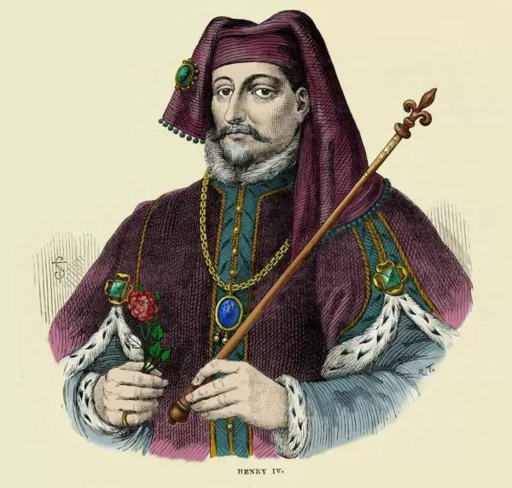
The reign of King Henry IV began with usurpation and heralded a period of power struggles that would end in the War of the Roses. As he rode to his Coronation, in 1399, his predecessor languished in jail and would die in mysterious circumstances within months. Henry IV’s coronation was a show of power, designed to establish his authority at a time of turbulence and to demonstrate that he was a king for all the English people.
The new king had only arrived back in England a few months before he was crowned. Henry of Bolingbroke, as he was known before his accession, had been sent into exile by his cousin, King Richard II, whose own rule had descended into a chaotic form of despotism. Henry returned when Richard, inexplicably, stopped him inheriting the lands, title and wealth of his father, John of Gaunt, who died in February 1399. However, this campaign soon turned into a push for the crown itself. Richard, whose authority was in tatters, abdicated and Henry became king on September 30th 1399.
His coronation took place less than two weeks later. The date chosen was highly symbolic. October 13th is the feast day of Edward the Confessor. The last Anglo-Saxon king had been canonised in the 12th century and was a popular saint but he was also symbolic of the English monarchy. Henry would go on to make his Coronation address in English, another significant moment. Henry wanted to rule for all the English, not just the warring noble factions.
The new king had won soe support across the ruling classes, many of whom had had enough of Richard’s power play and attacks on their own status. But Henry knew how fragile that support could be. He wanted popular backing, too. He also had a sharp sense of PR, knowing how to appeal to those he sought to rule, a consideration that had rarely troubled Richard. His coronation was a show of the king he intended to be.
And it was a spectacular event. As was traditional, the king went to the Tower of London in the days beforehand – monarchs always rode from the great fortress to Westminster Abbey for their coronations.
Henry’s procession to the church from the Tower saw him dressed in royal blue and cloth of gold, astride a white horse, and surrounded by 2,000 lords, ladies and knights as well as members of his household. They made their way through the streets which were decorated while wine fountains were erected to share the celebrations. To shore up his power, the new king had created dozens of new knights ahead of his Coronation and they were present at the procession, dressed in green.
Henry kept vigil at Westminster before being bathed and purified with holy oils. He entered the Abbey for his Coronation beneath a golden canopy while his heir, the thirteen year old Prince Henry, was at the king’s side and carried the Coronation sword. The centre of the Abbey was decked with gold cloth for the service. It was a striking sight, designed to create an aura of power and majesty after the turbulent times of Richard II.
However, there was a reminder of the fragility of royal rule at the start of the spectacular Coronation banquet. As was traditional, hundreds sat down to an elaborate feast in Westminster Hall after Henry IV was crowned. But another tradition sent echoes of power struggles through the room. Since the time of William the Conqueror, the King’s Champion had ridden into the banquet to be ready to fight in case anyone challenged the power of the new monarch. Less than two weeks earlier, Richard II had given up his throne in Westminster Hall. Henry was a usurper king but his enemy’s power base had fragmented. Richard was locked up under his control and no one dared to challenge the authority of the new king.
Henry’s reign would prove successful, steadying England after a troublesome time. However, his overthrow of a cousin would set a dangerous precedent. In the decades that followed, as his own House of Lancaster weakened, other royal relations decided their time had come to grab the throne. The War of the Roses was an unthought of war at the time Henry was crowned but its shadows had begun to fall in the days before his Coronation.

